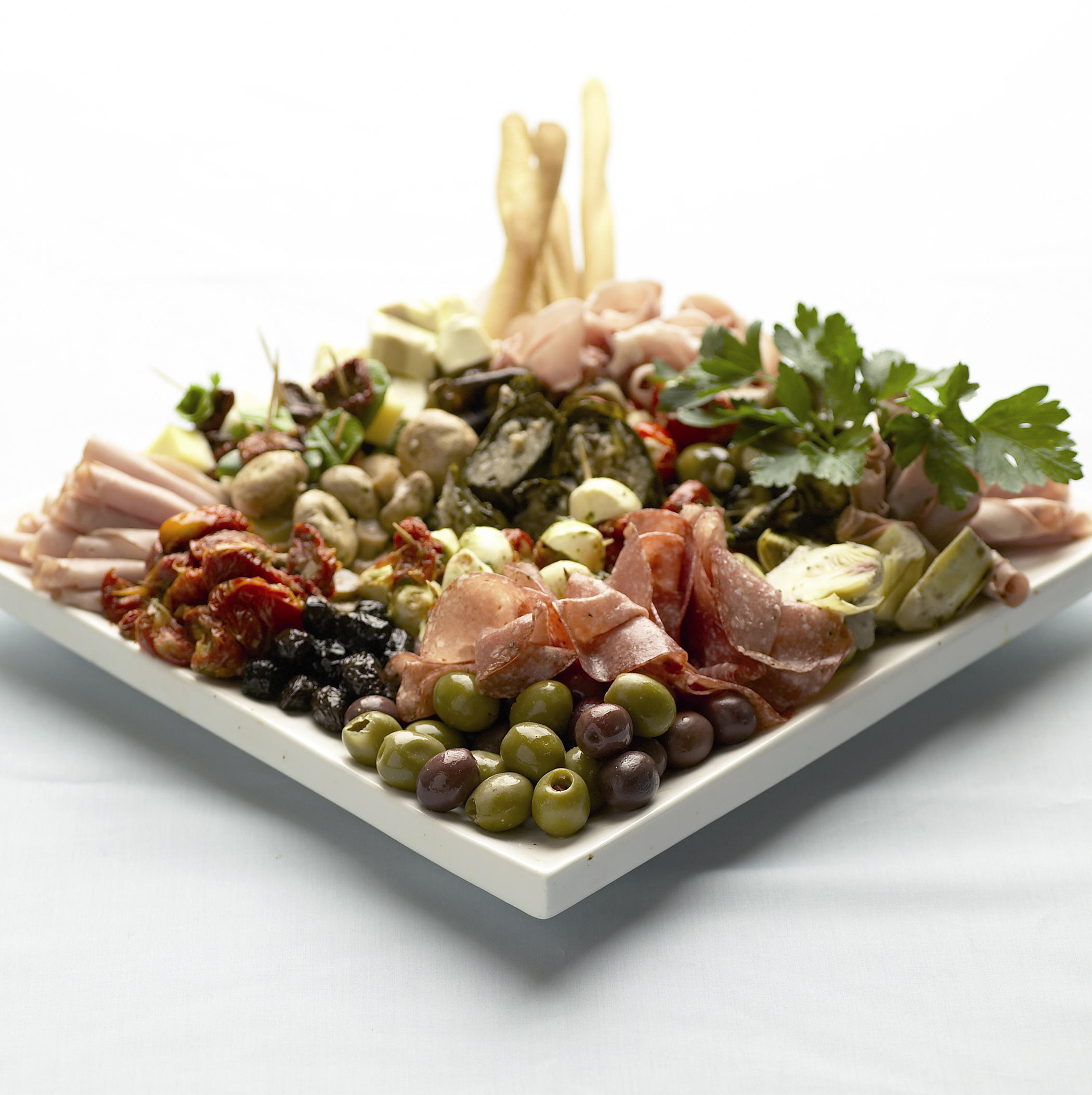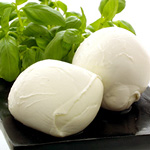Today’s post was influenced by my job. I work summers waiting tables, which generally is a bad thing for foodies. I speak from experience when I say that waiting tables can sometimes make you hate food. I watch so many rich and delicious dinners go in and out of the kitchen, but I tend to spend a lot of evenings “eating” a 7-11 slurpee for dinner at 11:30.
Tonight, one of my many tables pointed somewhat guiltily at the Insalata Caprese and asked me what buffalo mozzarella was. As an Italian, I was astonished. I explained as simply as I could, that buffalo mozzarella was mozzarella made from the milk of water buffalos, and while my response probably ended this exchange for my customers, it started me thinking about the differences between what “mozzarella” means to different people.
I was raised in an Italian family, on platters of prosciutto and salami with roasted red peppers, lightly battered and fried zucchini flowers, and bocconcini (small balls of buffalo mozzarella) marinated in olive oil. Larger buffalo mozzarelle was reserved for special occasions, like Christmas, Easter, and my grandmother’s birthday, which, coincidentally, falls tomorrow.

Buffalo mozzarella is the king of mozzarella, made from the rich milk of water buffalos. The best buffalo mozzarelle still come from the area around Naples, where the first mozzarella was invented in the 1600s. The name “mozzarella” comes from the Italian “mozzare” meaning “to cut,” which describes the process of making the cheese: the cheesemaker kneads the cheese until the proper consistency is acheived, at which point the mozzarella is pulled into strands and cut into pieces.

With a slightly firm exterior skin covering the incredibly soft, almost spreadable inside and a delicate yet complex milky flavour, buffalo is a far cry from the processed “mozzarella” that most of America is familiar with, and even quite distinct from the “Fior di Latte,” (flower of milk) which is the Italian term for cow’s milk mozzarella.
Buffalo mozzarella is expensive, but is now fairly widely available. It should be used within 24-48 hours of purchase. Although some like to use buffalo mozzarella on pizzas and in pasta dishes, I personally think it is best served alone, or with tomatoes, olive oil, salt, and pepper. However, if you do wish to encorporate it into a dish, this is one I use time and again to use up buffalo mozzarella before it turns.
Mozzarella and Tomato Orecchiete
Bring a large pot of salted water to a boil. Add two cups of dry orecchiete. Cook, stirring occasionally, until “al dente,” (about 6 minutes). Drain the pasta and toss lightly with olive oil. Add two ounces of mozzarella, diced, and stir to encorporate. Add two Roma tomatoes, chopped, and a chiffonade of approximately five basil leaves. Salt and pepper to taste, and serve immediately.
emiglia